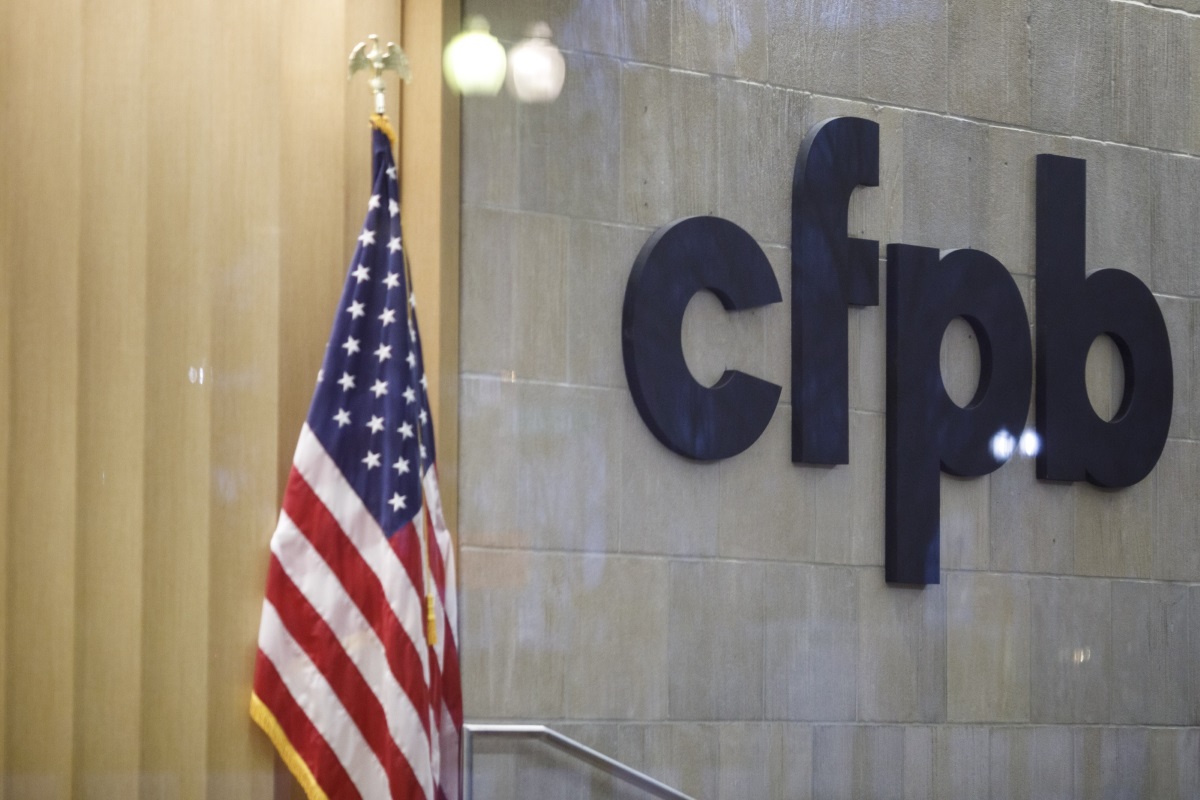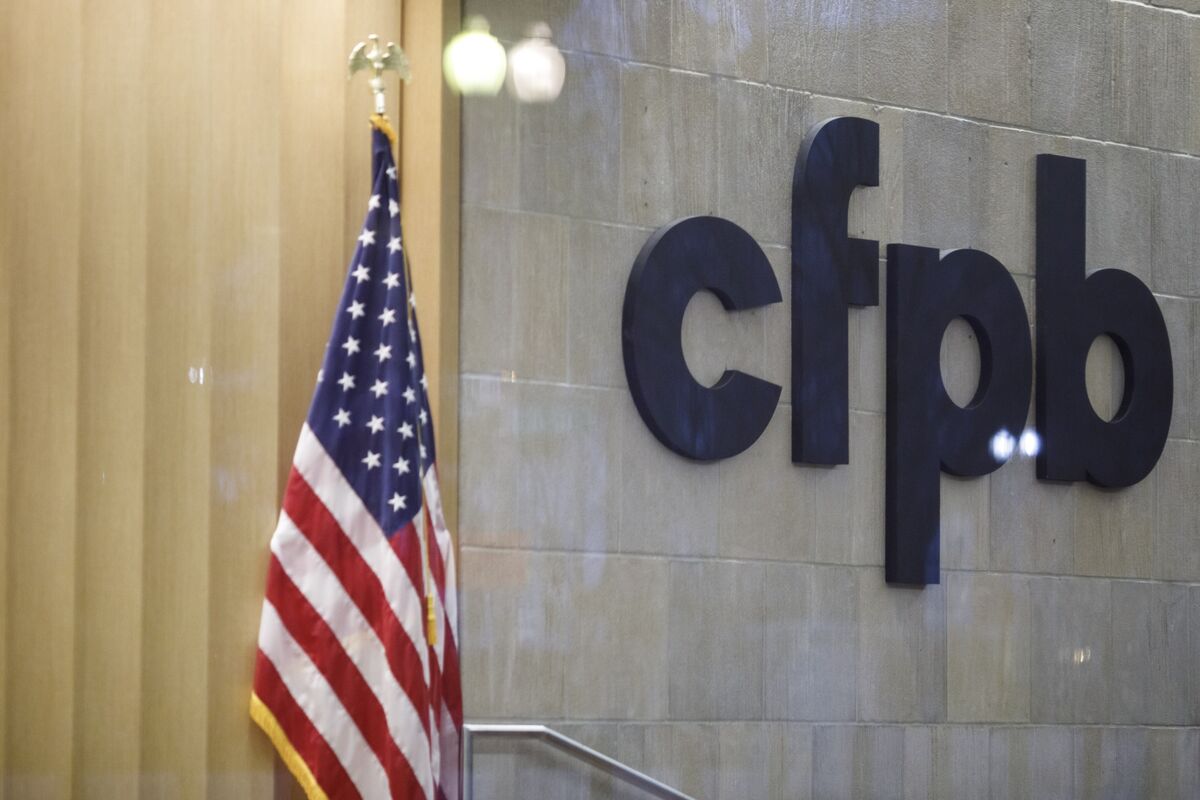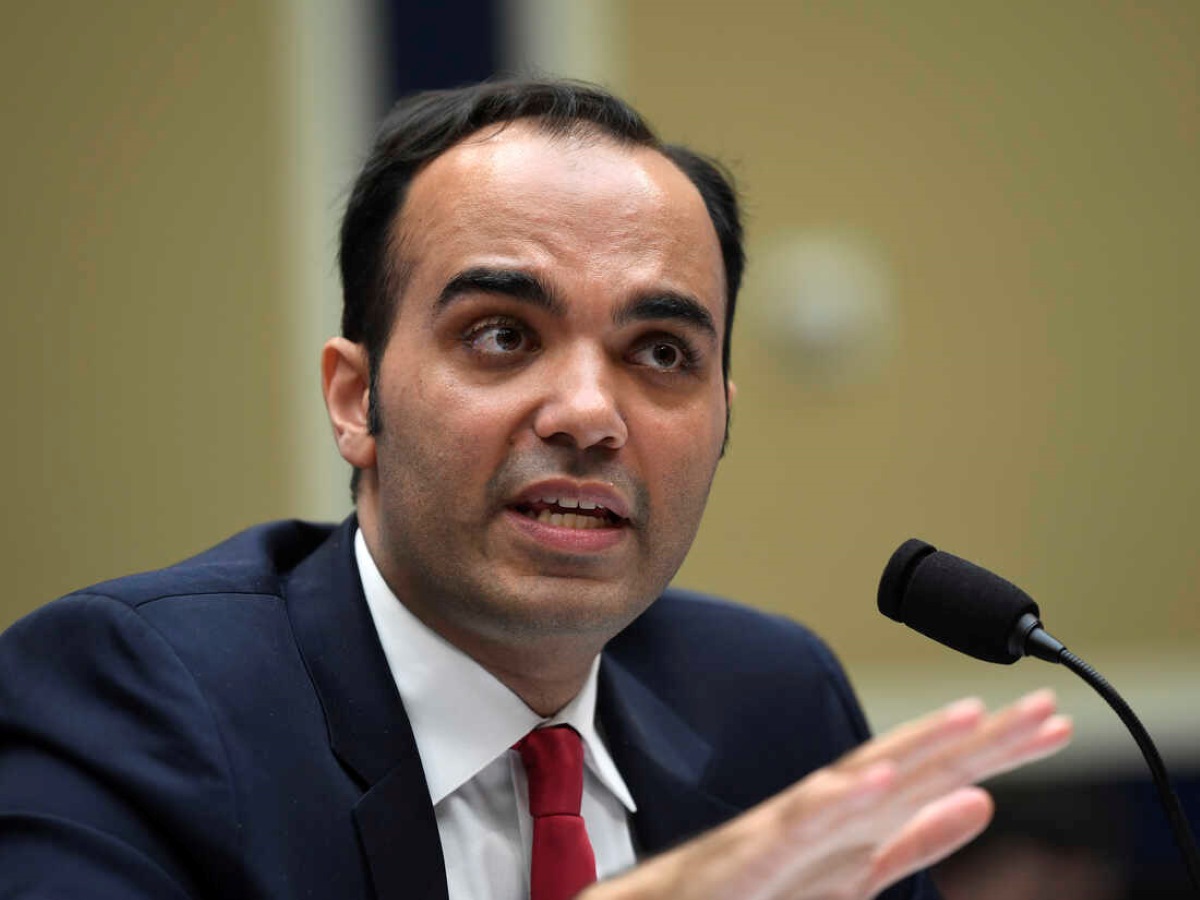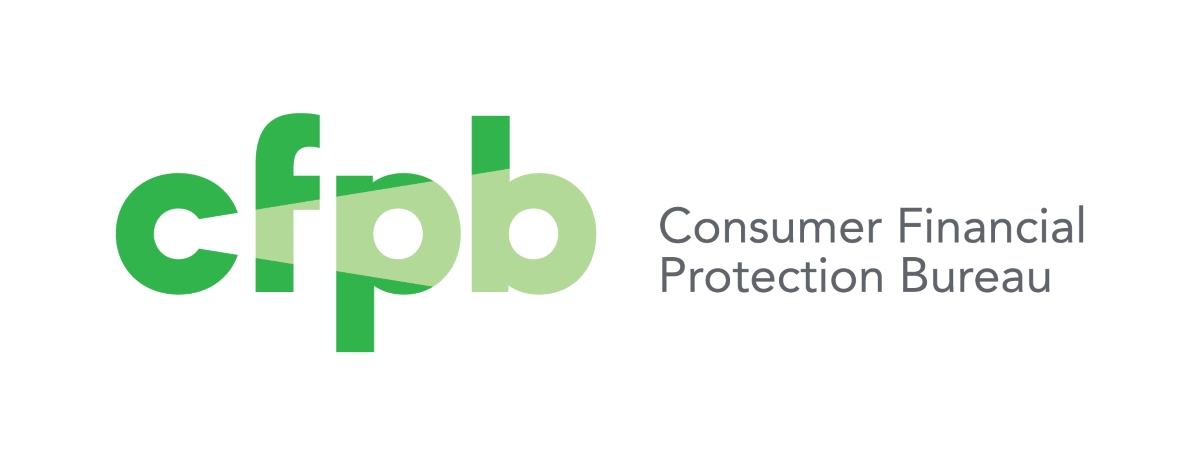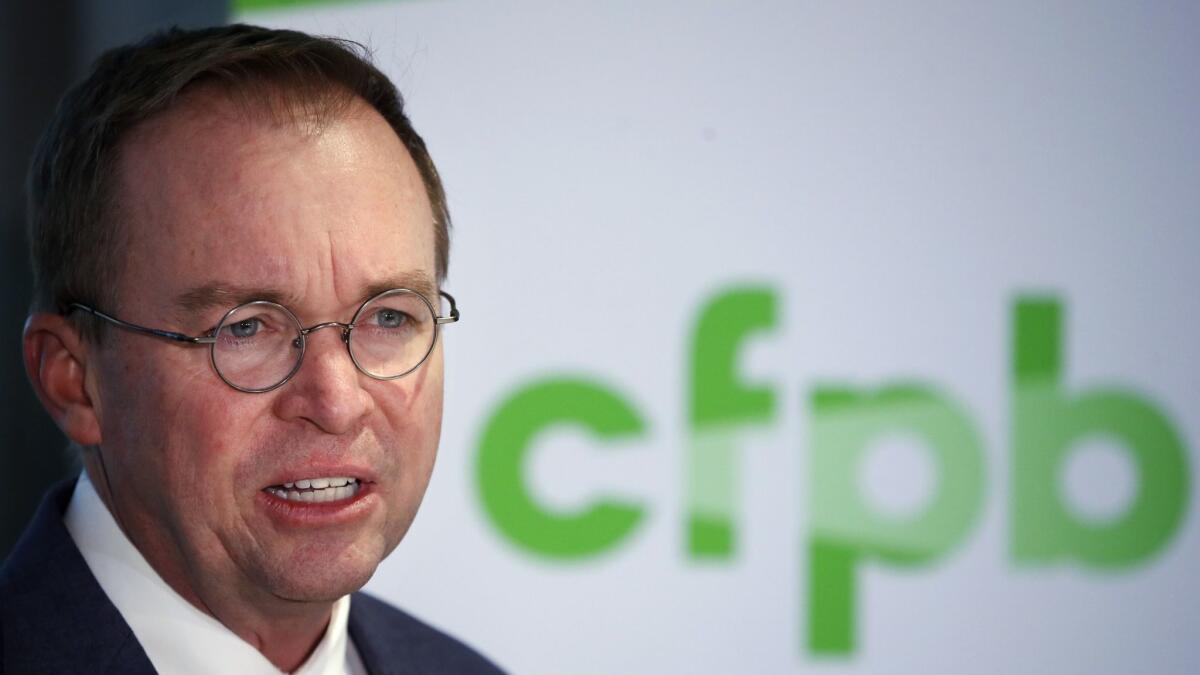Home>Finance>Who Is Responsible For Funding The Consumer Financial Protection Bureau?


Finance
Who Is Responsible For Funding The Consumer Financial Protection Bureau?
Modified: March 1, 2024
Discover who is responsible for funding the Consumer Financial Protection Bureau and how finance plays a crucial role in supporting this regulatory agency.
(Many of the links in this article redirect to a specific reviewed product. Your purchase of these products through affiliate links helps to generate commission for LiveWell, at no extra cost. Learn more)
Table of Contents
- Introduction
- The Origins of the Consumer Financial Protection Bureau
- The Structure and Authority of the CFPB
- Funding Mechanisms for the CFPB
- The Role of Congress in Funding the CFPB
- The Debate over Funding the CFPB
- Political Influences on CFPB Funding
- Potential Solutions for CFPB Funding Challenges
- Conclusion
Introduction
The Consumer Financial Protection Bureau (CFPB) plays a crucial role in protecting consumers in the financial marketplace. Established in 2011 as part of the Dodd-Frank Wall Street Reform and Consumer Protection Act, the CFPB was created to address issues of predatory lending, unfair financial practices, and to provide consumers with the necessary information to make informed decisions.
This regulatory agency has the authority to enforce federal consumer financial laws and regulations, conduct investigations, and educate consumers about their rights and financial options. However, the functioning and effectiveness of the CFPB is highly dependent on its funding.
In this article, we will explore the funding mechanisms of the CFPB and examine the role of various stakeholders, including Congress and political influences, in determining its budget. We will also discuss the ongoing debate surrounding the funding of the CFPB and potential solutions to address the challenges it faces.
It is important to understand the nuances of CFPB funding as it directly impacts the agency’s ability to carry out its mission of protecting consumers from deceptive financial practices. By shedding light on this topic, we aim to provide a comprehensive overview of the funding of the Consumer Financial Protection Bureau and its significance in safeguarding the financial interests of consumers.
The Origins of the Consumer Financial Protection Bureau
The Consumer Financial Protection Bureau (CFPB) is a relatively young regulatory agency established in response to the financial crisis of 2008. Prior to its existence, there was no single agency dedicated to protecting consumers from predatory practices in the financial industry.
The CFPB was conceived as part of the Dodd-Frank Wall Street Reform and Consumer Protection Act, which aimed to address the root causes of the financial crisis and ensure the stability of the financial system. Its primary purpose was to consolidate the consumer protection responsibilities that were spread across various other government agencies.
Before the establishment of the CFPB, consumer protection in the financial industry fell under the jurisdiction of agencies such as the Federal Trade Commission (FTC) and the Office of the Comptroller of the Currency (OCC). However, these agencies had limited enforcement powers and lacked a singular focus on consumer protection.
With the creation of the CFPB, the goal was to establish a dedicated agency solely focused on protecting consumers in their financial transactions. The CFPB was granted broad authority to enforce federal consumer financial laws and regulations, conduct investigations, issue rules and regulations, and provide educational resources to consumers.
The leadership of the CFPB was initially vested in a single director, appointed by the President and confirmed by the Senate for a five-year term. This single-director structure was designed to ensure independence and accountability in carrying out the agency’s mission.
The CFPB’s inception was met with both support and criticism. Advocates argued that the consolidation of consumer protection responsibilities under one agency would lead to more effective enforcement and better outcomes for consumers. Critics, however, expressed concerns about the agency’s expansive powers and lack of oversight.
Since its establishment, the CFPB has made significant strides in protecting consumers from unfair and deceptive practices in the financial marketplace. It has implemented regulations and enforcement actions to address issues such as payday lending, mortgage practices, credit reporting, and debt collection.
Despite its achievements, the CFPB has faced challenges, including funding limitations, political pressures, and legal battles that have shaped its operations and effectiveness. Understanding the origins of the CFPB is crucial in comprehending its role in consumer protection and how it has evolved over time to address the changing landscape of the financial industry.
The Structure and Authority of the CFPB
The Consumer Financial Protection Bureau (CFPB) operates as an independent regulatory agency with a specific focus on consumer financial protection. Its structure and authority are designed to ensure its ability to effectively carry out its mission.
The CFPB is headed by a director who is appointed by the President and confirmed by the Senate. The director serves a five-year term and has the authority to make rules, issue orders, and bring enforcement actions against financial institutions that violate federal consumer financial laws.
Under the director, the CFPB is organized into several divisions and offices that specialize in different areas of consumer protection. These include the Office of Consumer Education and Engagement, the Office of Supervision, the Office of Research, the Office of Enforcement, and the Office of Innovation, among others.
The CFPB has broad jurisdiction over financial institutions, including banks, credit unions, mortgage lenders, payday lenders, debt collectors, and other companies that offer financial products and services to consumers. It has the authority to supervise and regulate these institutions to ensure compliance with federal consumer financial laws.
One of the key powers of the CFPB is its ability to issue regulations and guidance to protect consumers. These regulations cover various aspects of the financial industry, such as mortgage lending, credit reporting, debt collection, and payday lending. The CFPB’s rulemaking process involves soliciting public input, conducting research, and assessing the potential impact of regulations on consumers and financial institutions.
In addition to rulemaking, the CFPB has enforcement authority to take action against companies that engage in unfair, deceptive, or abusive practices. It can initiate investigations, file lawsuits, and impose penalties to hold wrongdoers accountable and to deter future misconduct. The CFPB has achieved significant monetary recoveries for consumers through enforcement actions, providing restitution and remediation.
Furthermore, the CFPB plays a vital role in consumer education and engagement. It provides resources and tools to help consumers make informed financial decisions and avoid predatory practices. The CFPB’s website offers information on topics such as budgeting, managing debt, choosing a mortgage, and avoiding scams.
Overall, the structure and authority of the CFPB are designed to empower and protect consumers in the complex world of finance. Through its regulatory powers, enforcement actions, and educational initiatives, the CFPB has become a central player in safeguarding the interests of consumers and promoting fair and transparent practices in the financial marketplace.
Funding Mechanisms for the CFPB
The Consumer Financial Protection Bureau (CFPB) relies on funding to carry out its consumer protection activities. The funding mechanisms for the CFPB are unique compared to other government agencies, and they have been a subject of debate and controversy since its establishment.
Unlike many federal agencies that are funded through the congressional appropriations process, the CFPB is funded primarily through the Federal Reserve. The Dodd-Frank Act established a dedicated funding stream for the CFPB, allowing it to receive a portion of the Federal Reserve’s operating expenses.
Under this funding mechanism, the CFPB receives a quarterly transfer from the Federal Reserve, which is not subject to the regular congressional appropriations process. The amount transferred is determined by a formula based on the CFPB’s budget and the Federal Reserve’s operating expenses.
This funding arrangement is intended to provide the CFPB with independence from political influence and ensure its ability to carry out its consumer protection mandate effectively. By securing its funding through the Federal Reserve, the CFPB can operate autonomously and focus on its mission without the risk of partisan budget battles or potential funding cuts.
However, this funding mechanism has been a source of controversy and criticism from some lawmakers and industry groups. Critics argue that the CFPB’s funding structure lacks transparency and accountability since it is not subject to the traditional appropriations process.
There have been calls for changing the CFPB’s funding mechanism to subject it to the regular congressional appropriations process. Proponents of this change argue that it would provide Congress with more oversight and control over the agency’s budget, ensuring that taxpayer dollars are spent responsibly.
Moreover, the CFPB’s funding mechanism has also come under scrutiny due to legal challenges and court decisions. In 2020, the Supreme Court ruled that the structure of the CFPB, including its funding mechanism, was unconstitutional. The court held that the CFPB’s single-director structure with limited control by the executive branch violated the separation of powers.
Despite the legal challenges, the CFPB continues to receive its funding from the Federal Reserve. The agency is accountable to Congress through regular reporting requirements and oversight hearings, where lawmakers can scrutinize the CFPB’s activities and budget.
Overall, the funding mechanisms for the CFPB are unique and have sparked debates about independence, transparency, and accountability. The reliance on the Federal Reserve for funding has allowed the CFPB to operate independently, but it has also raised concerns about the agency’s oversight and the potential for political influence.
As the CFPB continues its mission of protecting consumers in the financial marketplace, discussions surrounding its funding mechanisms are likely to remain a topic of interest and debate in the ongoing efforts to balance the agency’s independence with appropriate oversight and accountability.
The Role of Congress in Funding the CFPB
While the Consumer Financial Protection Bureau (CFPB) primarily receives its funding through the Federal Reserve, Congress still plays a significant role in overseeing and influencing the agency’s budgetary process. Although the CFPB’s funding is not subject to the regular appropriations process, Congress maintains the power to shape and allocate resources to the CFPB, ensuring accountability and transparency in the agency’s financial operations.
First and foremost, Congress exercises oversight over the CFPB’s activities through its committees and subcommittees. Lawmakers hold hearings and request reports from the CFPB leadership to review the agency’s performance, budgetary needs, and overall effectiveness in protecting consumers. These oversight activities provide Congress with a platform to scrutinize the CFPB’s funding and assess whether taxpayer resources are being utilized efficiently.
Congress also has the authority to modify the CFPB’s funding structure and require additional reporting and accountability measures. Through legislation, lawmakers can propose changes to the CFPB’s financing, such as subjecting the agency to the traditional appropriations process. This would enable Congress to directly allocate funding to the CFPB and exert more control over the agency’s budgeting decisions.
Furthermore, Congress plays a critical role in the confirmation process of the CFPB’s director. As the agency’s leader, the director has significant influence over the agency’s priorities, initiatives, and budgetary decisions. The President’s nominee for the CFPB director must be confirmed by the Senate, which provides Congress with an opportunity to assess the candidate’s qualifications and vision for consumer protection.
Congressional hearings on the director nominee allow lawmakers to question the nominee on their stance on funding mechanisms, priorities, and potential financial reforms. By vetting the director nominee, Congress can indirectly influence the CFPB’s funding trajectory by selecting a candidate whose views align with lawmakers’ expectations and priorities.
In addition to direct oversight, Congress can also influence the CFPB’s funding indirectly through legislation pertinent to the financial industry. Lawmakers have the power to modify and enact laws that impact the financial institutions regulated by the CFPB. These laws might include provisions that require additional funding or assign the agency new responsibilities, shaping the CFPB’s budgetary needs and priorities.
Given the CFPB’s unique funding structure and the political dynamics surrounding the agency, debates and discussions about its funding mechanisms frequently occur in Congress. Lawmakers from various political ideologies express differing views on the appropriate level of funding, oversight, and independence for the agency. These debates often reflect broader ideological and policy differences regarding the role of government in consumer protection and financial regulation.
Overall, while the CFPB’s funding primarily comes from the Federal Reserve, Congress remains actively engaged in overseeing and influencing the agency’s budgetary processes. Through oversight, confirmation hearings, legislation, and indirect influence through financial industry laws, Congress exercises its role in shaping the CFPB’s funding and directing its activities to ensure the agency’s accountability, effectiveness, and alignment with congressional priorities.
The Debate over Funding the CFPB
The funding mechanisms of the Consumer Financial Protection Bureau (CFPB) have been a subject of intense debate since its inception. The unique funding structure, which relies on transfers from the Federal Reserve rather than the traditional congressional appropriations process, has sparked conversations about independence, transparency, and accountability.
One key debate revolves around the independence of the CFPB. Supporters argue that the agency’s funding mechanism, separate from political influences, enables it to carry out its consumer protection mission effectively. By drawing funding from the Federal Reserve, the CFPB can avoid partisan budget battles and potential funding cuts that could hinder its ability to protect consumers. Proponents contend that this independence allows the agency to act swiftly and autonomously in addressing emerging issues in the financial marketplace.
On the other hand, critics argue that the CFPB’s funding structure lacks transparency and accountability. They assert that the agency’s funding should be subject to the regular appropriations process, where Congress can directly allocate resources and scrutinize the agency’s budget. Critics contend that the current funding mechanism makes it difficult for lawmakers to hold the CFPB accountable for its spending decisions and priorities.
Some critics also express concerns about the Federal Reserve’s role in funding the CFPB, as it raises questions about potential conflicts of interest or undue influence. They argue that the Federal Reserve, as a banking regulator, may have inherent biases that could impact the agency’s funding decisions and subsequent actions.
The debate over the CFPB’s funding also intersects with broader ideological and political disagreements about the role of government in financial regulation. Advocates for a limited government argue that the CFPB’s funding structure allows it to operate with too much independence and unchecked power. They contend that the agency should be subject to tighter control through the congressional appropriations process to ensure that taxpayer dollars are used efficiently and that the agency remains accountable to elected representatives.
Conversely, proponents of a robust consumer protection framework emphasize the importance of maintaining the CFPB’s independence from political pressures and industry influence. They argue that subjecting the agency to the appropriations process could potentially compromise its ability to protect consumers effectively. They assert that the CFPB’s funding mechanism allows it to operate in the best interest of consumers and act as a strong regulatory authority without unnecessary interference or delays.
Efforts to alter the CFPB’s funding structure have emerged in Congress over the years. Some lawmakers have proposed legislation to subject the agency to the regular appropriations process, aiming to provide Congress with more direct control over the CFPB’s funding decisions. These proposals highlight the ongoing debates surrounding the funding of the CFPB and indicate the importance of finding a balance between autonomy and congressional oversight.
As the CFPB continues to play a significant role in protecting consumers in the financial marketplace, the debate over its funding is likely to persist. Finding a solution that balances the agency’s need for independence with appropriate oversight and accountability will remain a challenge, as policymakers seek to ensure efficient allocation of resources and the effective execution of the CFPB’s mission.
Political Influences on CFPB Funding
The funding of the Consumer Financial Protection Bureau (CFPB) is not immune to political influences, despite its unique funding mechanism. Various political factors can shape the agency’s budget and affect its ability to carry out its mission of protecting consumers in the financial marketplace.
One significant political influence on CFPB funding is the broader ideological and partisan dynamics in Congress. Funding decisions for the CFPB can become contentious, particularly if there are political disagreements about the agency’s role and the scope of its regulatory authority. Lawmakers with different ideological perspectives may attempt to exert their influence over the CFPB’s funding through the appropriations process or other legislative measures.
The political climate in Congress can also impact the CFPB’s funding through strategic budgetary maneuvers. Lawmakers who support the agency’s mission and independence may work to ensure adequate funding for the CFPB, while those who hold differing views may attempt to limit or restrict its budget as a means to curtail its perceived influence or authority.
Furthermore, the appointment and confirmation process for the CFPB’s director can be influenced by political factors that indirectly affect the agency’s funding. The Senate confirmation process allows lawmakers to question and evaluate the nominee’s stance on funding mechanisms and financial reforms. Depending on the political leanings of the majority party, the confirmation process may introduce discussions and negotiations about the CFPB’s budget and oversight.
External interest groups and industry stakeholders can also exert political influence on CFPB funding. Consumer advocacy organizations and industry trade associations often voice their opinions and lobby lawmakers on issues related to the CFPB’s budget. These groups seek to shape funding decisions in alignment with their respective objectives and interests, which can sway political support and allocate resources accordingly.
The influence of political factors on CFPB funding is not limited to the legislative branch. The executive branch, specifically the President’s administration, can play a role in advocating for and shaping the agency’s budget. The President’s budget proposal and related policy priorities can reflect their stance on the CFPB’s funding and influence the broader political discourse surrounding the agency’s financial resources.
Political influences on CFPB funding can result in both positive and negative outcomes. On one hand, political support for the agency’s mission can lead to increased funding and resources, empowering the CFPB to effectively protect consumers. Conversely, political resistance or opposition can result in reduced support or even attempts to limit the agency’s budget and authority.
It is essential for the CFPB to navigate these political influences to ensure its independence and effectiveness in carrying out its mandate. Striking a balance between political realities and the agency’s mission is crucial to maintain consumer protection and the integrity of the financial marketplace.
Ultimately, the funding of the CFPB will continue to be shaped by political influences, highlighting the significance of ongoing discussions and negotiations in determining the resources required to fulfill the agency’s mission of safeguarding consumer interests in the financial industry.
Potential Solutions for CFPB Funding Challenges
The funding of the Consumer Financial Protection Bureau (CFPB) has been a topic of debate and controversy since its establishment. To address the challenges associated with its funding and promote transparency, accountability, and effectiveness, several potential solutions have been proposed.
1. Congressional Appropriations: One potential solution is to subject the CFPB to the traditional congressional appropriations process. This would involve Congress directly allocating funds to the agency, providing lawmakers with increased oversight and control over the CFPB’s budget. Proponents argue that this would enhance accountability and ensure that taxpayer dollars are spent efficiently, while opponents raise concerns about potential political influence and partisan battles.
2. Fee-Based Funding: Another solution is to explore alternative funding mechanisms, such as a fee-based system. Under this approach, financial institutions or industry stakeholders could pay fees to support the CFPB’s operations. Advocates argue that this would ensure that those regulated by the CFPB bear the cost of its activities, while critics raise concerns about potential conflicts of interest and the burden placed on regulated entities.
3. Non-Governmental Funding Sources: Some suggest exploring funding sources beyond the Federal Reserve or congressional appropriations. For instance, private foundations or philanthropic organizations could provide funding to support the CFPB’s mission. However, concerns about potential influence from external entities and maintaining the agency’s independence would need to be carefully addressed.
4. Enhanced Reporting and Accountability: Strengthening reporting and accountability requirements can help address concerns about transparency and oversight. Requiring the CFPB to provide detailed reports on its activities, budget allocation, and use of funds would enable Congress and the public to have a better understanding of the agency’s operations. This could include regular audits, performance evaluations, and fiscal oversight measures to ensure responsible use of resources.
5. Legal and Structural Reforms: Consideration could be given to legal and structural reforms to enhance the CFPB’s funding process. This could involve reviewing the agency’s governing laws and exploring options for greater flexibility in obtaining funding. For example, modifying the agency’s structure or governance model may provide more opportunities for collaboration and negotiation on funding matters.
6. Bipartisan Consensus: Fostering bipartisan consensus and cooperation on CFPB funding is crucial to ensure its stability and effectiveness. Building bridges across party lines and seeking common ground can lead to more sustainable funding solutions that prioritize consumer protection while addressing concerns about accountability and political influence.
It is important to note that any potential solution for CFPB funding challenges needs careful consideration of the agency’s mission, independence, and the broader regulatory landscape. Striking the right balance between autonomy and oversight is key to maintaining the agency’s effectiveness in protecting consumer interests while addressing concerns about accountability and transparency.
Ultimately, finding a comprehensive funding solution for the CFPB may require a combination of these approaches and ongoing dialogue among policymakers, industry stakeholders, and consumer advocacy groups. By exploring potential solutions and engaging in open discussions, stakeholders can work towards a funding framework that allows the CFPB to fulfill its mission effectively and ensure the financial well-being of consumers.
Conclusion
The funding of the Consumer Financial Protection Bureau (CFPB) is a critical aspect of its ability to fulfill its mission of protecting consumers in the financial marketplace. The unique funding mechanisms of the CFPB, coupled with the political influences surrounding its budget, have sparked debates and discussions about independence, transparency, and accountability.
Despite the controversies surrounding its funding, the CFPB plays a vital role in safeguarding the interests of consumers. Its establishment as an independent regulatory agency was a response to the need for dedicated and effective consumer protection in the aftermath of the financial crisis.
The CFPB’s funding structure, primarily relying on transfers from the Federal Reserve, is intended to provide the agency with independence from political influence and ensure its ability to act in the best interests of consumers. However, this funding mechanism has been criticized for its lack of transparency and accountability.
Congress maintains oversight over the CFPB’s activities and funding through its committees and confirmation processes. There are ongoing debates about subjecting the CFPB to the congressional appropriations process, which would provide lawmakers with more direct control over the agency’s budget. Meanwhile, interest groups and industry stakeholders can also exert political influence on CFPB funding through lobbying efforts.
Potential solutions for the CFPB’s funding challenges include exploring alternative funding mechanisms, such as fee-based funding or non-governmental sources, as well as enhancing reporting and accountability requirements. Legal and structural reforms and fostering bipartisan consensus are also key considerations in addressing funding concerns.
In conclusion, finding the right balance between independence, transparency, and accountability in funding the CFPB is crucial to ensure the agency’s effectiveness in protecting consumers. Collaborative efforts among policymakers, industry stakeholders, and consumer advocacy groups are necessary to navigate the complex landscape of CFPB funding and shape a funding mechanism that supports the agency’s mission while addressing concerns about political influence and responsibility.
Ultimately, securing stable and sufficient funding for the CFPB will enable it to continue its crucial work in safeguarding consumer interests, promoting fair and transparent financial practices, and contributing to a more equitable and trustworthy financial marketplace for all.
